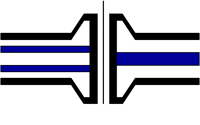Paddle Type Orifice Plates
are used for creating a differential pressure drop in which to measure the flow rate between two points located at the pressure taps of orifice flanges.Turn Down Rate for orifice plates are less than 5:1. Their accuracy are poor at low flow rates.
Obtaining a high accuracy depends on an orifice plate in good shape, with a sharp edge to the upstream side. Wear reduces the accuracy.
Orifice plates used for flow measurement require a bevel on the downstream side. Orifice plates used for restriction purposes only do not come with a bevel unless upon request.
click here for dimensional charts
Bore Styles (Click the images for dimensions.)
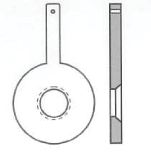
|
Concentric beveled bore: Used primarily for clean, homogeneous flow of liquids, gases, or vapors that are relatively non-viscous. The bevel is matched at a 45 degress angle to the desired edge thickness where called for by ISA/AGA/API/ANSI specifications.The tag number for this type of orifice plate typically begins with FE (flow element). (example: FE-2490). These orifice plates are beveled until the land equals the width of the plate. For example, according to standards an 8" orifice plate has a land of 1/8" thick. If the specificatios call for a 1/8" thick plate then thetre is no bevel. However, if the specifications call for a 1/4" thick plate, then there is a bevel to accommodate the 1/8" thick land. |
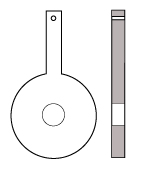
|
Restriction bore: Used for a non flow measurement situation where solely a pressure-drop is needed. Unlike the beveled orifice plate for flow measurement, this plate is unbeveled in all sizes. The beta ratio for restriction plates does not have a limit as accuracy is not the goal. The tag number for these plates typically begins with FO or RO. (i.e.: FO-2490, RO-2490). These orifice plates should not be confused with cup and tab type restriction plates which fit into 3000# and 6000# unions. |
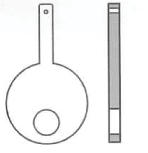
|
Eccentric bore: Used primarily for measurement of entrained solids or slurries. The eccentric bore can also be used to measure vapors & gases where condensation is present. The eccentric bore is offset to where the bore edge is inscribed in a circle that is 98% of the line I.D. |
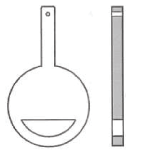
|
Segmental Bore The segmental bore is located in the same way that the eccentric bore is. These bores are used primarily for slurries or extremely dirty gases where the flow may contain impurities heavier than the fluid. |
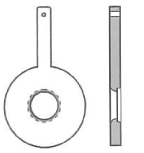
|
Quadrant Bore: This type of orifice bore is primarily used in the measurement of high viscocity flow such as heavy crude, syrups and slurries. The inlet is a quarter of a circle and the plate thickness must be as least as thick as the radius of the inlet. The quadrant bore is always recommended where the Reynolds Number factor is less than 10,000. The radius of the quadrant bore must be calculated or specified upon quoting as the radius determines the thickness of the orifice plate. For instance, if the radius is calculated to be 0.192", the thickness of the orifice plate will need to be quoted as 0.25" thick to allow for the complete radius. Any remaining thickness will serve as the counter-bore on the downstream side. 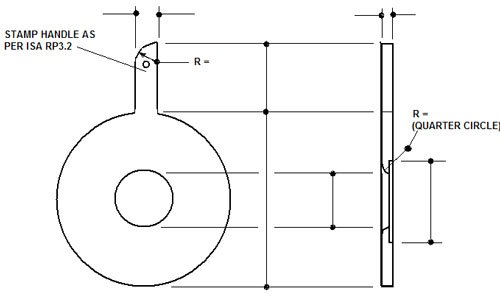
|
